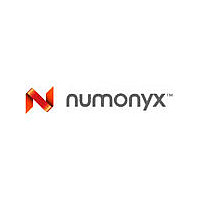JS28F320J3F75A NUMONYX, JS28F320J3F75A Datasheet - Page 39

JS28F320J3F75A
Manufacturer Part Number
JS28F320J3F75A
Description
PARALLEL NOR
Manufacturer
NUMONYX
Datasheet
1.JS28F320J3F75A.pdf
(66 pages)
Available stocks
Company
Part Number
Manufacturer
Quantity
Price
Company:
Part Number:
JS28F320J3F75A
Manufacturer:
MICRON
Quantity:
3 400
Company:
Part Number:
JS28F320J3F75A
Manufacturer:
MICRON35
Quantity:
54
Part Number:
JS28F320J3F75A
Manufacturer:
INTEL
Quantity:
20 000
Numonyx
Note:
9.5
9.6
Note:
March 2010
208032-02
®
Embedded Flash Memory (J3 65 nm) Single Bit per Cell (SBC)
Issuing the Read Array command to the device while it is actively erasing causes
subsequent reads from the device to output invalid data. Valid array data is output only
after the block-erase operation has finished.
Standby power levels are not be realized until the block-erase operation has finished.
Also, asserting RP# aborts the block-erase operation, and array contents at the
addressed location are indeterminate. The addressed block should be erased before
programming within the block is attempted.
Blank Check
The Blank Check operation determines whether a specified array block is blank (i.e.
completely erased). Without Blank Check, Block Erase would be the only other way to
ensure a block is completely erased. Blank Check is especially useful in the case of
erase operation interrupted by a power loss event.
Blank Check can apply to only one block at a time, and no operations other than Status
Register Reads are allowed during Blank Check (e.g. reading array data, program,
erase etc.). Suspend and resume operations are not supported during Blank Check, nor
is Blank Check supported during any suspended operations.
Blank Check operations are initiated by writing the Block Blank Check command to the
block address. Next, the Blank Check Confirm command is issued along with the same
block address. When a successful command sequence is entered, the device
automatically enters the Read Status State. The WSM then reads the entire specified
block, and determines whether any bit in the block is programmed or over-erased.
The status register can be examined for Blank Check progress and errors by reading
any address within the block being accessed. During a blank check operation, the
Status Register indicates a busy status (SR.7 = 0). Upon completion, the Status
Register indicates a ready status (SR.7 = 1). The Status Register should be checked for
any errors, and then cleared. If the Blank Check operation fails, which means the block
is not completely erased, the Status Register bit SR.5 will be set (“1”). CE# or OE#
toggle (during polling) updates the Status Register.
The device remains in Status Register Mode until another command is written to the
device. After examining the Status Register, it should be cleared by the Clear Status
Register command before issuing a new command. Any command can follow once the
Blank Check command is complete.
Suspend and Resume
An erase or programming operation can be suspended to perform other operations, and
then subsequently resumed.
cycles.
All erase and programming operations require the addressed block to remain unlocked
with a valid voltage applied to VPEN throughout the suspend operation. Otherwise, the
block-erase or programming operation will abort, setting the appropriate Status
Register error bit(s). Also, asserting RP# aborts suspended block-erase and
Table 24
shows the Suspend and Resume command bus-
Datasheet
39












